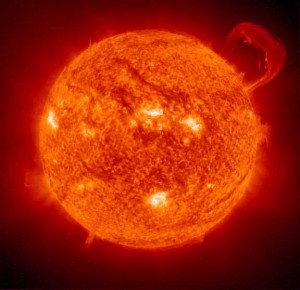SHTF and the grid falls. There are no emergency services and everyone is on their own. Chaos is breaking out all over as society starts to crumble. A very real and possible scenario for a system that is already beginning to show signs of failing. It could happen at any time of the year. If it happened in the summer would you know how to keep cool without the modern conveniences of today like air conditioning and fans? What if someone you know starts exhibiting signs of being overheated? Like the many medical emergencies that can occur after the SHTF such as treating a burn, heat stroke, if not treated immediately, is likely to lead to death. Knowing the signs to look for and the steps to take are vital for the preservation of you and your group.
Types of Heat-Related Injuries
The human body can only handle so much heat (and cold for that matter) before it starts to shut down. Treatment measures need to be acted upon quickly therefore, one needs to know that signs to look for in heat-related injuries. It is a sad situation but as the temperature rises, with out proper heat attention and protection, people can start dropping like flies. Types of heat-related situations that you could encounter:
- Heat Cramps: This heat-related situation occurs when the body overexerts itself leading to muscle spasms.
- Heat Exhaustion: This heat-related situation results when the body looses too much fluids due to over sweating. Skin requires more blood flow hence, taking away from important organs. Mild shock will be the result.
- Heat Stroke: This heat related situation can cause death. During heat stroke, the body looses the ability to control it’s own temperature. As a result, damage to the brain and death are likely to occur.
Heat Exhaustion
We have probably all experienced heat cramps before. Whether out in the yard, in a hot place, or even driving in your car, heat cramps are the way your body tells you that it is overheating. More or less, it is a simple fix to resolve heat cramps. However, heat exhaustion could be over looked as heat cramps especially since heat exhaustion does not rise the temperature of the body. Heat exhaustion should not be confused with heat cramps because heat exhaustion, if not treated immediately, will lead to a heat stroke. Symptoms to look for in a person experiencing heat exhaustion are:
- Sweating heavily
- Skin that is cool to the touch, pale, moist or flushed
- Headache
- Dizziness
- Nausea
- Vomiting
- Exhaustion
Remember, that a person suffering form heat exhaustion should not be confused with just too much heat or even heat cramps. Heat exhaustion, if not treated immediately, will lead to a heat stroke.
Heat Stroke
Unlike heat exhaustion, heat stroke does raise the body’s temperature. The temperature of someones body who is experiencing a heat stroke can be 105°F or higher! It should not surprise anyone when I say that, if not treated immediately, the person most likely will die. Symptoms signaling a heat stroke are:
- Lack of sweating
- Red skin that is hot to the touch
- Shallow breathing
- Slipping in and out of consciousness
- A pulse that fluctuates from weak to rapid.
Again, if not treated quickly, the person experiencing heat stroke will die. If you see someone (or is experiencing it yourself) suffering from heat exhaustion, treatment must be acted on quickly before heat stroke can strike.
Treating Heat Exhaustion and Heat Stroke
As stated before, when heat exhaustion sets in heat stroke will follow unless treatment steps are taken immediately. These steps should be taken both if the person has heat exhaustion and/or if you were too late and heat stroke has set in:
- Immediately remove the person from the hot area and (if possible) find a cooler area.
- If you have access to a cool bath slowly place the person in there. If not, attempt to slowly cool the person’s body down with wet and cool sheets or towels.
- Slowly give the person water to drink. Too much water at one time can lead to vomiting and nausea. A good rate of flow to follow is administering one half of a glass of water about every 15 minutes.
- Do not give water (or food) is the person is losing consciousness, vomiting or cramping. This is where you would want to seek a medical person immediately. If none is available then closely watch the person and do what you can to cool them down and to stop the cramping and vomiting.
This is why it is so vital to prevent heat exhaustion from occurring at all. If you notice the symptoms of heat exhaustion developing in you or someone near you then immediately move to a cooler location and drink plenty of water. Paying attention to the signs of heat exhaustion can say lives. Do not let these symptoms go unnoticed. The sooner you can get to a cooler place the better off you and the people near you will be. Remember this, if the grid falls, the places that you normally go to seek out a cooler environment might not exist anymore due to no or very little electricity. You might not have access to a fan or air condition but a cooler environment can always to located. Always be vigilant of your immediate surroundings. Be it a tree for shade, a cave or even a cool creek or river. Don’t let heat exhaustion happen to you or anyone you know.


